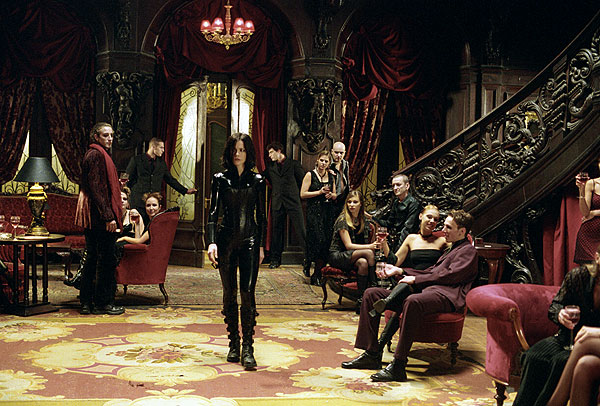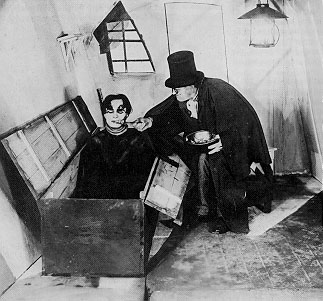The Gothic Film: From Classic to "Blockbuster"
|
Home
|
The
core elements of the gothic film and its imagery have been transformed
with the onset of the late twentieth century's "Hollywood
blockbuster".

The genre of the gothic film originated in the early 1900s, with Thomas Alva Edison's adaptation of Frankenstein, and had one of its first successes in Robert Wiene's The Cabinet of Dr. Caligari. From its origination as the black and white, silent film, to the technologically enhanced "Hollywood blockbuster", the major gothic elements still remain, yet are modernized along with the technology that shows them. The villain, the heroine, and the hero are the qualifications for the genre's form, yet are the cause for visible discrepancy through the decades of its existence. In his analysis of the film narrative, Berger emphasizes the obligation of films to reflect the dominant beliefs in society; the general idea of these conventional characterizations have remained, yet have reformed to accommodate modern societal values. The gothic film has gone from a style of genre to a stylized effect within other genres.
 The
gothic, due to its form as a film, "has a visual impact that
goes beyond what the intellect makes of things, and that is because
the power of images…Images are resonant and call up in us all
kinds of unrecognized and suppressed feelings" (Berger 149).
The gothic film relies on imagery to establish a feeling of anxiety,
dread, and the unknown, yet these images have changed to develop
a sense of confusion and parrallelism. From the black and white
classic of The
Cabinet of Dr. Caligari (1919) to such a high budget film
as
Underworld (2003), the elemental imagery of the classic
gothic film still exists in form, but has been comparably modified
in regard to style. As proposed by Vladimir Propp, "the functions
of characters are independent of the characters' fulfilling their
functions and are the fundamental elements of a story" (Berger
24). The characters in recent gothic film narrative have retained
their original functions as the villain, the heroine, and the
hero, yet have gained the characteristics to mix their functions
together. The forms of the villain, heroine, and hero are used,
but their characterization and their action within the film, have
been adapted to modern society, therefore adapting the gothic
film to other genres.
The
gothic, due to its form as a film, "has a visual impact that
goes beyond what the intellect makes of things, and that is because
the power of images…Images are resonant and call up in us all
kinds of unrecognized and suppressed feelings" (Berger 149).
The gothic film relies on imagery to establish a feeling of anxiety,
dread, and the unknown, yet these images have changed to develop
a sense of confusion and parrallelism. From the black and white
classic of The
Cabinet of Dr. Caligari (1919) to such a high budget film
as
Underworld (2003), the elemental imagery of the classic
gothic film still exists in form, but has been comparably modified
in regard to style. As proposed by Vladimir Propp, "the functions
of characters are independent of the characters' fulfilling their
functions and are the fundamental elements of a story" (Berger
24). The characters in recent gothic film narrative have retained
their original functions as the villain, the heroine, and the
hero, yet have gained the characteristics to mix their functions
together. The forms of the villain, heroine, and hero are used,
but their characterization and their action within the film, have
been adapted to modern society, therefore adapting the gothic
film to other genres.
Jelena Momirov

|
Disclaimer © 2003 - 2004 by class of SOSC 4319 at York University |